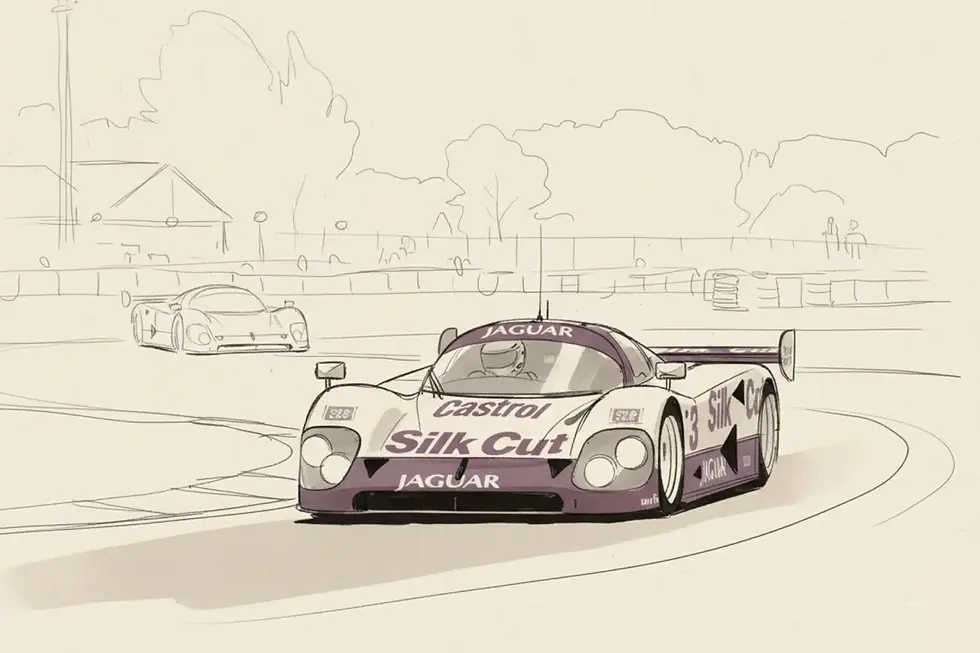British motorsport

British motorsport /brit-ish moh-ter-sport/ noun (uncountable)
British motorsport encompasses the wide range of competitive automotive racing disciplines that originated, developed, and are contested within the United Kingdom. It is a national obsession born from a love of tinkering in sheds and a profound disregard for health and safety, a world of glorious contradictions that pits the glamour of Formula One against the grim reality of a club rally in a Welsh forest. British motorsport was founded on the brilliance of inspired amateurs who consistently managed to build world-beating cars on a shoestring budget, a sport defined by heroic, underdog victories and the magnificent, often self-inflicted, failures of its grandest teams.
The Full Story of British Motorsport
The story of British motorsport begins on the vast, banked concrete of Brooklands, the world's first purpose-built racing circuit. Opened in 1907, it was a place of astonishing speed and terrifying danger, establishing Britain as the home of organised motor racing. The true explosion in popularity, however, came after the Second World War. Britain was littered with disused RAF airfields, and these flat, winding expanses of tarmac at places like Silverstone and Goodwood proved to be the perfect venues for racing. This accessibility created a thriving club racing scene, a fantastically fertile breeding ground for the drivers and engineers who would soon conquer the world.
Britain's greatest impact was on Formula One. In the 1950s, the sport was dominated by grand, state-sponsored continental teams like Ferrari and Maserati. The British challengers were small, innovative, and ran on a fraction of the budget. Enzo Ferrari famously dismissed them with the insult "garagistes" (garage-dwellers). It was meant as a slight, but it became a badge of honour. From a small garage in Surbiton, Cooper Cars introduced the rear-engined layout that made every front-engined car instantly obsolete. Then came Lotus, led by the engineering genius Colin Chapman, who pioneered lightweight monocoque chassis and aerodynamic ground effects. These "garagistes", including teams like Brabham, McLaren, and Williams, would dominate Formula One for the next three decades.
This obsession with racing was not confined to single-seaters. The British Touring Car Championship (BTCC) became famous for its close, aggressive, and often panel-denting action, turning humble family saloons into gladiatorial weapons. In the forests, the RAC Rally established itself as one of the most challenging events in the world, producing heroes like Colin McRae, a driver whose spectacular, all-or-nothing style perfectly embodied the nation's motorsport spirit.
This long and rich history has created a unique industrial legacy. The concentration of Formula One teams and specialist engineering firms in the Midlands of England has created "Motorsport Valley", a global hub for high-performance engineering that designs and builds the fastest racing cars on the planet. The shed-based tinkerers had, against all odds, created a world-beating industry.
For The Record
What made the post-war airfield circuits so important?
They provided a huge number of accessible, low-cost venues. This allowed a thriving "club racing" scene to develop, where amateurs could race on a budget. This scene became the foundation of the entire British motorsport pyramid, producing the drivers and engineers who would go on to dominate the world.
What did Enzo Ferrari mean by "garagistes"?
He meant it as an insult. He saw his Ferrari team as a grand, noble constructor, building every part of the car in-house. He looked down on the British teams like Cooper and Lotus, who bought their engines from suppliers and built their cars in small workshops, like common garage mechanics. His insult perfectly captured the underdog spirit that the British teams embraced.
Is Formula One still a British sport?
In many ways, yes. While the drivers, sponsors, and races are global, the engineering heart of the sport remains in the UK. A majority of the teams, including giants like Mercedes, Red Bull Racing, and McLaren, are based in Britain's "Motorsport Valley."
What defines the British Touring Car Championship (BTCC)?
Close, aggressive, and highly entertaining racing. Its appeal lies in seeing highly modified versions of everyday family saloon cars being driven with a complete lack of mechanical sympathy, often resulting in spectacular on-track battles, heated rivalries, and a great deal of broken bodywork.
Who was Colin McRae?
He was a Scottish rally driver who became Britain's first World Rally Champion in 1995. He was famous for his incredibly fast, spectacular, and often crash-prone driving style, summed up by his personal motto: "If in doubt, flat out." He perfectly embodied the heroic, risk-taking spirit of British motorsport.
